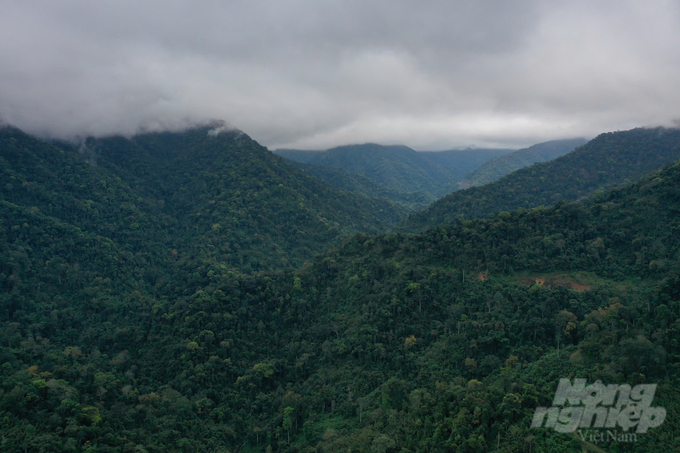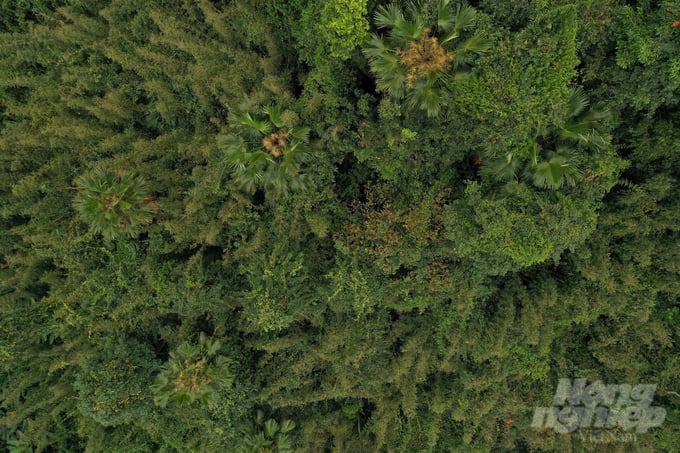November 28, 2025 | 05:04 GMT +7
November 28, 2025 | 05:04 GMT +7
Hotline: 0913.378.918
November 28, 2025 | 05:04 GMT +7
Hotline: 0913.378.918
Thanh Hoa province has a total forest area of 647,437 ha, with a forest coverage rate of 53.75%. Among this, nearly 400,000 ha are eligible for forest environmental service payments, with an annual payout of VND 30–35 billion. Over the years, Thanh Hoa has been recognized as one of the provinces that has effectively implemented the forest environmental service payment policy.
The implementation of this policy not only provides additional income for residents but also raises awareness about forest protection. It strongly motivates people to engage in forest conservation and development, contributing significantly to increasing forest coverage and improving the forest ecosystem.
Regarding payments to households, more than 2,000 families across Thanh Hoa directly receive payments totalling VND 2–3 billion/year. This income helps improve their living conditions, reducing pressure on forests and enabling better forest protection.

The forest environmental service payment policy plays a crucial role in forest management and protection. Photo: Ngoc Diep.
Regarding payments to village and community groups, 628 villages across the province receive forest environmental service payments, with each village receiving an average of VND 15–20 million annually, and the highest payment reaching about VND 200 million. These funds are used by villages to support and pay for forest patrol teams, repair and upgrade transportation and irrigation infrastructure, renovate cultural houses, and support livelihood development initiatives such as establishing revolving loan funds.
“The implementation of the forest environmental service payment policy is contributing to ensuring forest security and protecting the ecological environment. The payments have provided additional income, helping the mountain people develop rural areas”, said Mr Tam.
Thanh Son commune, Quan Hoa district, Thanh Hoa province, is home to more than 90% ethnic minority residents. With a terrain dominated by hills and limited farmland, the local people previously relied heavily on forest product exploitation and encroaching on forest land to grow food crops.
In response to this situation, the Thanh Hoa Forest Protection, Development, and Disaster Prevention Fund has actively implemented awareness-raising activities about the forest environmental service payment policy. At the same time, they encouraged the locals to participate in forest protection, and take on contracts for forest care and management. Thanks to these ongoing efforts, the environmental service payments have been made on time, ensuring that households under contract receive a stable income, helping to improve their lives and reduce pressure on forest resources.

The implementation of the forest environmental service payment policy has brought about positive changes, encouraging greater involvement from local communities and governments in forest protection tasks. Photo: Ngoc Diep.
In particular, since 2000, forest fire prevention and control have been well managed, with no serious incidents occurring. As a result, the forest environment has been increasingly maintained and protected effectively, contributing to the stability of local livelihoods and economic development.
Translated by Hoang Duy

(VAN) After the institutional merger, Da Nang possesses significant forest-carbon reserves and is proactively engaging in the carbon market, creating a new revenue stream.

(VAN) An Giang strengthens communication against IUU fishing, increases inspections and sanctions, and is determined to remove the EC’s “yellow card” while developing a sustainable fisheries sector.

(VAN) As green transition becomes a global trajectory, Viet Nam’s biggest challenge is not only technology and models, but how to ensure that capital flows reach the right beneficiaries.

(VAN) The Ministry of Agriculture and Environment must spearhead the construction of green governance, spanning decision-making processes and investment standards to policy evaluation mechanisms.

(VAN) The Agriculture and Environment sector of Khanh Hoa has achieved numerous milestones over the past 80 years, contributing significantly to the goal of establishing the province as a centrally governed city by 2030.

(VAN) Viet Nam is entering the pivotal period of 2025-2030, moving toward the formulation of the Remote Sensing Law, which will establish a legal foundation for the development of national digital data.

(VAN) The agricultural sector is finalizing the strategic framework for emission reduction, setting the goal of sharply cutting methane and 403.7 million tons of CO2 equivalent and moving toward Net Zero by 2050.